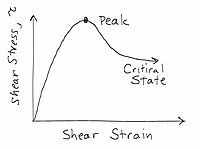
Photo from wikipedia
Abstract The classical elastic theory of laminates states that the transverse normal stresses in the local axis of the 90° layer of an undamaged laminate [θm/90n]S are positive due to… Click to show full abstract
Abstract The classical elastic theory of laminates states that the transverse normal stresses in the local axis of the 90° layer of an undamaged laminate [θm/90n]S are positive due to in-plane shear force, the transverse normal stresses will be negative when the shear load is in the opposite direction. For the laminate [θm/90n]S with transverse matrix cracks, the cracks in the 90°-layer should be open for the tensile stress and closed for the compressive stress. Therefore, two cases of the transverse cracks in the unbalanced laminates subjected to shear loading are studied such that the cracks are open for one case and the cracks are closed for another case. A stress-based variational model is developed to study the effective in-plane compliance and the stress distribution in symmetrical laminates with two different types of transverse matrix cracks in 90°-ply under an in-plane shear loading. The inter-laminar shear stresses are assumed to be in the form of general functions. A partition coefficient λ is introduced into the normal stresses σx for the closed cracks. The expressions of the stress components for the closed and the open cracks are obtained from the equilibrium equations and the boundary conditions, respectively. The governing equations for the two types of cracks are also derived using a variational approach with the principle of minimum complementary energy. In addition, analysis of strain energy and analysis of deformation on surface are used to estimate the effective in-plane shear properties of the laminates. The coupling coefficients and the shear elements in the compliance matrix are investigated for the two types of cracks. The distributions of the in-planar and the inter-laminar stresses are also presented. Limits of the compliance elements and the stress distributions at the infinite crack density are compared to the results of the classical theory of laminates.
Journal Title: International Journal of Solids and Structures
Year Published: 2017
Link to full text (if available)
Share on Social Media: Sign Up to like & get
recommendations!